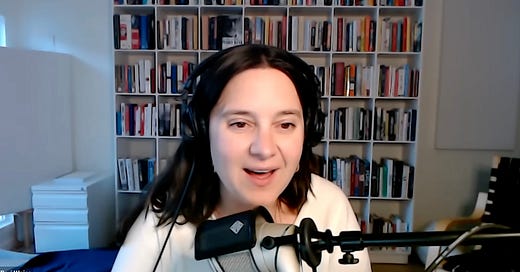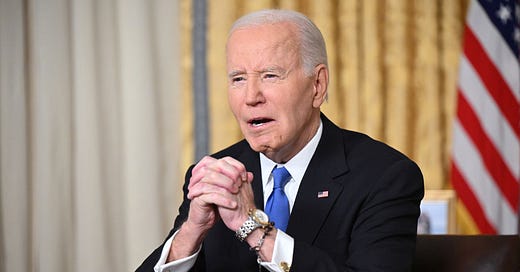
There's No Such Thing as a 'COVID Housing Crisis'
We were living through this crisis long before the pandemic came along.
Things are extremely bad right now. The COVID-19 pandemic is worse than ever and only getting worse by the day as cold weather forces people inside, the holidays bring people together, and the government continues to fail at every level to take the necessary steps to provide adequate support to help contain the spread. And on top of the public health crisis, the housing crisis is about to get even worse than it already is.
That’s because the CDC nationwide ban on evictions due to lack of payment is set to end on December 31 and hundreds of thousands of landlords are already preparing to boot tenants.
The CDC order itself was an extension of a 120-day eviction ban in the CARES Act. (As much as the coronavirus pandemic has felt like living through a slow-motion car crash while blindfolded, it’s kind of amazing to look back and see that CARES Act was signed way back on March 27, when many of us still believed that this was going to be a bad, but short term situation. I’m not giving props to the government here, merely noting the continuous baffling nature of time during this pandemic.)
If Congress is able to strike a deal on a stimulus package before the year is over, there’s a good chance that the moratorium will be extended. If not, the wheels are already turning on some longer eviction bans at the state level. Even if these things happen, though, it won't be enough, because COVID is not the ultimate source of our housing problems.
As the year comes to a close, 30–40 million people across the country could be facing eviction and the National Low Income Housing Coalition estimates that at least $100 billion is needed in emergency rental assistance to avoid a crisis. When things are that dire, you know something more structural than a freak pandemic is to blame. As with so many other parts of our system, COVID has merely exposed the rot that was already present in the way we deal with housing in this country.
The problem is bad everywhere, but it’s particularly bad in California, where the pandemic has simply exacerbated the state’s long-existing housing catastrophe. Before the pandemic even hit, there were at least 150,000 Californians without a home due to an affordable housing shortage and some of the most expensive housing markets in the country. That’s not a pandemic problem, that’s a systemic problem.
Across the country, the state and city governments attempting to slow the hemorrhage feel a bit like plugging the holes in a ship made out of a cheese grater. I mixed some metaphors there, but you get what I mean. In Detroit, a ban on water shutoffs has been extended to 2022 and the Tallahassee government is similarly keeping utilities turned on for residents who can’t make payments. These actions, like the CARES Act, are essential, and also the bare minimum.
In Los Angeles, where I live, the LA City Council is currently considering using its dwindling coronavirus relief funds to buy an apartment building to prevent steep rent hikes for tenants—a prospect made possible due to a lapsed agreement to keep rent affordable (if that’s not a perfect Russian doll of baffling systemic fuckery than I don’t know what is). Meanwhile in Atlanta, officials say they’re having trouble spending their housing relief funds in the time required and just last week, Minnesota Governor Tim Walz encouraged residents in need to apply for state aid before a looming deadline. Local governments are scrambling. People are scrambling. Communities are relying more and more on mutual aid and tenant unions. The cheese grater metaphor is starting to make more sense, isn’t it?
All this doesn’t even begin to address the larger issue of what happens when the aforementioned eviction bans, government aid, and the pandemic itself are finally “over.” The moratoriums offer temporary relief, but once they’re lifted, tenants will have back pay, and for many, no new employment to help. Eviction bans don’t forgive rent, they postpone it. They’re welcome and necessary, but only a stopgap. In New Mexico, the National Council of State Housing Agencies estimates that between 60,000 and 80,000 renters in the state will owe as much as $150 million when 2020 comes to a close. That will undoubtedly increase the number of housing insecure people. We will likely see many Americans join the population of unhoused citizens who are already dealing with unique and unprecedented issues because of COVID. Many of those people could die as a result.
The inevitable wave of evictions may flood homeless shelters that are already overcrowded and experiencing outbreaks. Winter will only make these issues more difficult, and while the pandemic has actually facilitated certain unhoused communities, those communities are often subject to targeting and clearings. Unhoused people are already a vulnerable population to begin with, and particularly so during a pandemic that demands distancing and isolation. While there have been some successful measures enacted to aid these populations they, like everything else, have only been bandaids.
This was all a problem before 2020. The U.S. housing crisis already existed, racial disparity within the housing crisis already existed, and the booming number of people experiencing homelessness already existed. Even before the pandemic, almost half of U.S. renters spent more than 30 percent of their income on housing costs. Now, we could be heading toward a nationwide crisis in 2021 that could have widespread ramifications for years to come and could actually make housing even more unaffordable for lower-income earners.
The steps toward a solution are infuriatingly simple. In the immediate term, Americans need stimulus checks and rent forgiveness. We need jobs. We need affordable housing and regulated housing costs for homeowners and renters. The issue is vast, but the heart of the matter is clear: Millions of people are struggling more and more just to keep a roof over their heads. That’s an unreasonable problem in a country as rich as this one.
COVID has changed the way we think about just about everything, and there might be a chance it could change the way we think about housing. The pandemic slowed the production of affordable housing, but as the months have ticked by we’ve seen the temporary repurposing of places like hotels (most notably a pop-up shelter at a Minneapolis Sheraton), motels, Airbnbs, old office buildings and other commercial spaces to aid everyone from frontline workers to those experiencing homelessness. As the world readjusts and formerly occupied spaces remain unoccupied, maybe we’ll finally be more open to using those spaces more logically, sustainably, and humanely. Maybe someday we won’t need to suffer the irony of Facebook providing affordable housing in Northern California.
I hope that this holiday season millions of Americans get a stimulus package that will help them continue to weather the pandemic. Frankly, I’m not sure what will happen if Congress is unable to do that. But we shouldn’t be here in the first place. We shouldn’t be 20 days away from a deadline with dire consequences for millions of people and no confidence that those in power will take the necessary steps to do the bare minimum to keep people safe and alive. We shouldn’t be facing a historic housing collapse on top of an unprecedented public health crisis. We shouldn't accept that this is the way it has to be.
In August, Faye Porter, president of Chicago’s Tenants United for Better Housing, told Discourse Blog, “People living in poverty is violence itself.” Porter is right, and it’s only a matter of time before that violence becomes too much to bear.












